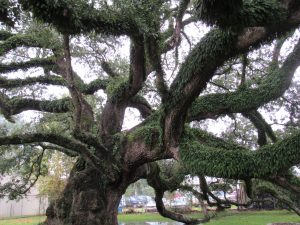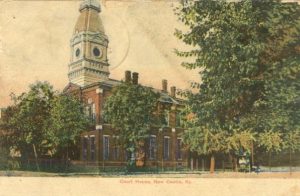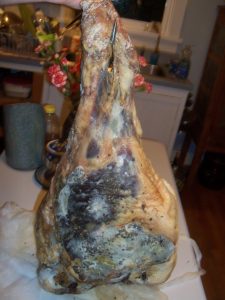
Sallier Oak
I had a chance to visit the Sallier Oak this week, while in Lake Charles, LA. A magnificent live oak, it is now over 375 years old. Since I’m off the farm, I leave you with this piece from a few years ago about a much younger tree.
One hundred and eighty years ago, while Andrew Jackson was president, around the year the Cherokee signed the treaty to vacate these lands, a white oak seedling began to grow on our farm. Ignored by the tramping feet and perhaps nurtured by the blood, by the close of the Civil War this seedling would have grown to a modest thirty feet — one of many thousands in a vast troop competing for space in the canopy, biding its time, waiting for the weaknesses of other trees to become manifest before taking its rightful space.
At the turn of last century, this particular white oak would have approached sixty-five to seventy-five feet, closing in on its mature height of ninety feet. But it would have another full century and more to add to its girth. Nourished by a taproot plunging deep into the earth, undisturbed by the butchery of men in distant lands, the arrival of the car, the plane, the tractor, this tree methodically put on growth: skinny rings in the lean famine years and fat, upper-class belly rings of indulgence in the feast years.
A survivor of countless storms, the tree stayed put when others failed. Not some flighty understory sprout that rose, then fell back in mere decades. Not the grand, fast-growing tulip poplar. This white oak was the mighty burgher of the woodland village, stolid.
An active participant in staying put, it constantly moved. A casual glance down the drive found our gauge of the weather: with each breath of wind, the twitching and bending of its smaller branches in dance informed us of the tempo of the music.
When on that day an average thunderstorm rolled across the opposite ridge, when out of the thousands of lightning strikes one sought out this tree, our tree, was there any awareness of death, self, family, loss, and the endurance of nearly two centuries? Was there a sense of submission to a greater power, any hubris that this couldn’t happen to such a mighty oak?
In the end it was an honorable death, a long life that fell to a greater axe than mine, that random but predictable shaft of wild energy — an act foredestined those one hundred and eighty years ago, that the mighty and the low will fall.



 On October 7th, 1780, the American militia, led by 1100
On October 7th, 1780, the American militia, led by 1100 


